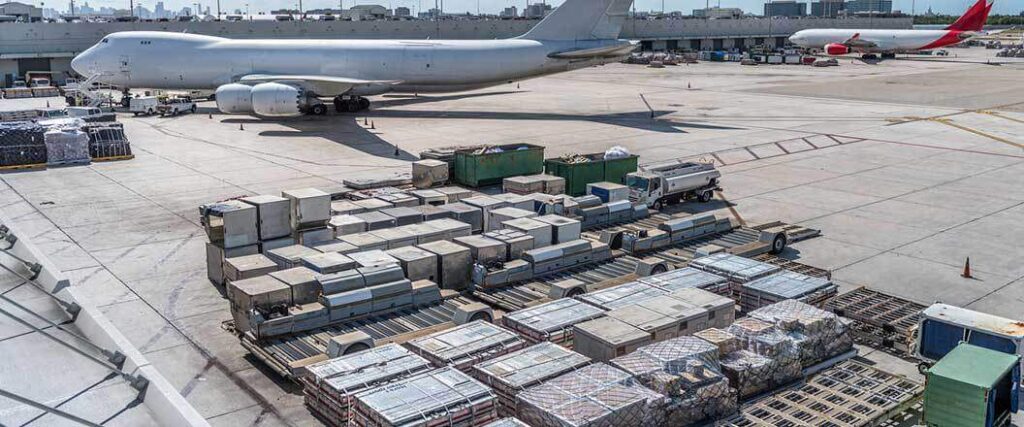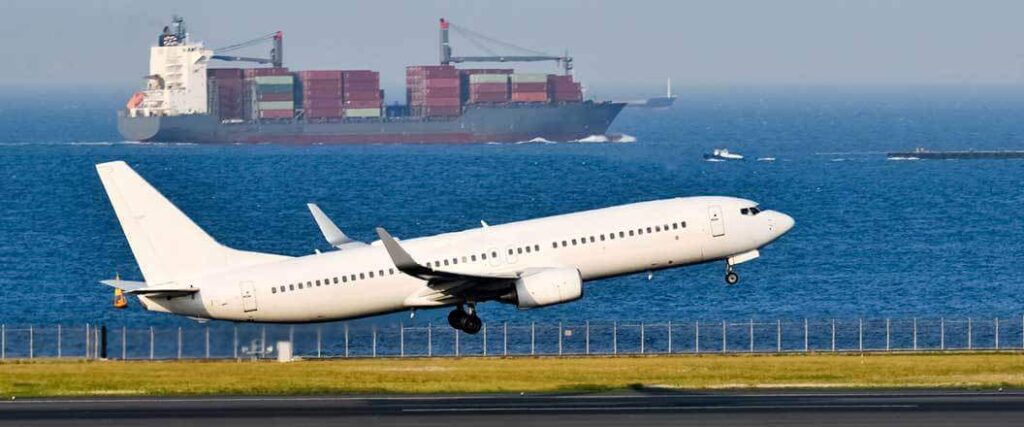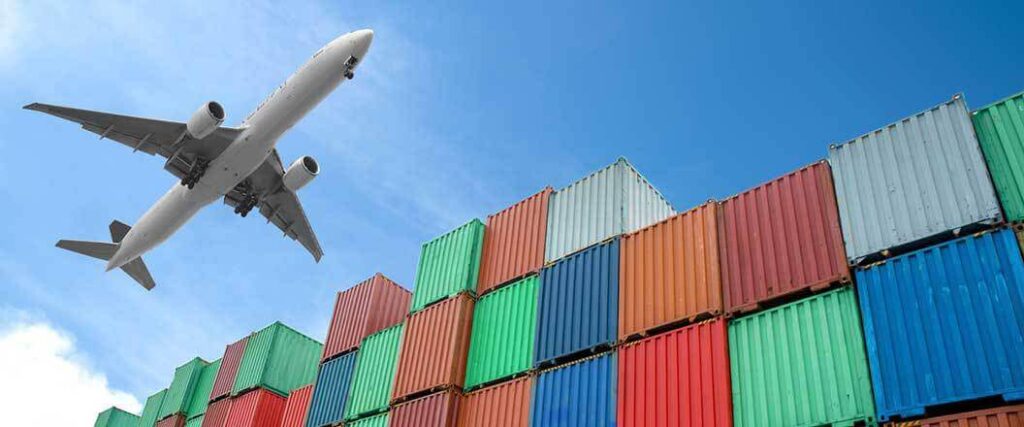Air cargo insurance rates go up or down based on differences in products or even routes. Although air freight transport is known for being the most expensive way to ship, the insurance rates and premiums are not. In most cases, air cargo insurance will cost less for similar coverage levels compared to other types of international transport, such as marine shipping.
The International Civil Aviation Organization (ICAO) and International Air Transport Association (IATA) provide quality standards for the global aviation industry. ICAO has an influence on air cargo insurance rates. Members agree to a certain limit of liability to help shippers to recover the cost of lost or damaged goods.
Let us help you gain a clear understanding of how insurance rates for air freight are calculated and what regulations you should know about.
Reading over an insurance policy is not most people’s idea of a good time. Quite the opposite. The legal language and insurance jargon used to define the premiums and limits of coverage are often misunderstood by all but the most experienced shippers.
Shippers using air freight services for the first time might be surprised at some of the differences in rate calculations. We’ll take the time to review these, along with various similarities.

In discussing the different types of air cargo insurance, we are referring specifically to the levels of coverage offered.
Whether you get your air cargo insurance from an air freight carrier or marine cargo provider, you should still be able to request these different coverage levels.
There are three basic levels of cargo insurance.
The actual names of the policies may vary. For example, you may hear all-risk insurance referred to as full-risk insurance. Even if certain details vary, each of the three listed types is a form of cargo insurance.
Beware of offerings from insurance providers that don’t seem to match any of the three types. There are some options, such as war risk coverage, that have very unique applications. These are usually added to one of the types previously listed.
If you want to learn more about this industry, read our article on air cargo insurance statistics.
You may also see an option using the term ‘declared value’ in connection with shipping protections. The declared value option is not cargo insurance; it is a way of increasing the carrier’s own level of liability coverage.
Domestic and international freight associations require carriers to carry minimum liability coverage to protect themselves. In some countries, including the United States, this is enforced by law.
For air cargo carriers, this comes out to 50 cents per pound per shipment, up to $100,000. For a shipper to receive a payout from a claim under the carrier’s limited liability policy, there must be proof that the carrier was specifically at fault for the damage or loss.
If your shipment was damaged by any of the following, the carrier does not have to pay.
There are a number of shippers that take this particular gamble, especially given the safety record of commercial flights. However, 50 cents per pound isn’t much in terms of protection or payout. That is where declared value comes into play.
A shipper declaring a higher value for their cargo than what it’s worth is requesting an excess valuation of their goods.
The process isn’t free. Excess valuation costs about 50 cents per $100 of value. Since limited liability is paid out by the pound, the idea is to raise the value per pound of your shipment. Even taken to the maximum, which is $500,000 of liability for most carriers, it usually comes out less than buying cargo insurance yourself.
If you only plan on sending the occasional single shipment by air, it might be worth it, since insurance premiums for single shipments tend to be high.
However, if you’re already spending the money to ship via air freight, chances are the cargo is high value. True insurance coverage is the best way to protect your investment.

An insurance policy is not meant to physically protect cargo any more than health insurance keeps you from getting sick.
You should purchase air cargo insurance because you want to protect yourself financially in the event of loss or damage.
Despite a great safety record, air freight carriers aren’t perfect. There is never a 100% guarantee against damage or loss. The more valuable the cargo, the more important it is to protect your business’ financial interests.
Consider the type of cargo frequently shipped by air:
These are expensive commodities in and of themselves. Add in shipping costs and the value goes up even higher. Without the right coverage, your business might not recover in the event of a total loss.
Air freight carriers issue an air waybill (AWB) to serve as a legally binding contract between the carrier, shipper, and receiver (if different). IATA has created a standard AWB that its members all use.
Among a few other things, an AWB contains a shipment’s actual value, which is used when calculating the insured value, to determine how much premium will be paid to the insurance company.
The insured value of the cargo is equal to the shipping cost, the actual value, and 10% of that total.
Insurance companies will charge a minimum premium per air waybill and use the provided formula for anything that exceeds the minimum. We’ll use a simplified example to show how this might look for an actual shipment. Company Alpha is shipping 25 industrial servers with an actual value of $125,000. The air freight costs come out to $3,000 for the entire shipment.
| Actual Value | $125,000 |
| Air Freight Costs | $3,000 |
| Total Cost | $128,000 |
| 10% of Total Cost | $12,800 |
| Insured Value | $140,800 |
Having an insured value of $140,800 doesn’t mean that’s the amount the company will receive in the event of a claim. It does represent the starting point of an insurance claim. Depending on the policy, the company may get a percentage of the total insured cost or just a percentage of the air freight costs by weight.
If you have chosen to forgo insurance coverage and are relying on the liability offered by the freight carrier, out of the total cost, you may only get reimbursed the $12,800. Depending on the extent and cause of the damage, even less is possible.
In other words, you stand to lose over $100,000 if the worst should happen.
Regarding calculating the actual cargo insurance premium, it’s only possible if you know the commodity rates used by the insurance companies.
Check out our article on calculating cargo insurance rates for more on this topic.
Figuring out claims and cargo value at the international level is harder because there may be a variety of different currencies involved. Despite the popularity of the U.S. dollar, it is not an international standard.
An organization called the International Money Fund (IMF) came up with the concept of an international currency value based on the strongest currencies of its members.
The IMF’s monetary reserve currency is known as Special Drawing Rights (SDR).
SDR currency value is built off a basket of five different currencies, which get reviewed every five years.
The country currencies making up the SDR basket as of August 2022 are the:
So what do SDRs have to do with air cargo insurance? The limits of liability per kilogram are measured in terms of SDR because damage during flight is out of the jurisdiction of any one country.
The current limit of liability for damage caused by a carrier is 22 SDR per kilogram. In USD, that comes out to about $30 per kilogram. These agreements are through ICAO which itself is a United Nations agency.

There are a few different ways to look at the limits of air cargo insurance rates. On the one hand, there is a literal limit of liability placed on air carriers. As mentioned, the limit of liability for air carriers is 22 SDR per kilogram.
The limit of liability for air cargo insurance policies was set by the Montreal Convention. This convention, organized by the ICAO, was originally signed in 1999. Currently, 139 different countries have signed to uphold the Montreal Convention and its regular updates.
The carrier bears the financial responsibility for loss or damage unless it can prove one or more of four exceptions.
These limits are specifically outlined by the Montreal Convention, but they are also standard exclusions of any cargo insurance policy.
A shipper might have the option to improve their coverage options by paying a higher premium for specific services. Certain commodities, such as historical artifacts or artwork, might be denied coverage by typical air cargo insurance providers.
When museums or private collectors loan out certain collections or individual pieces, they can be worth hundreds of millions of dollars. Though they often travel by air, they exceed the value that standard insurance providers are willing to cover.
Incoterms are a product of the International Chamber of Commerce (ICC) aimed at simplifying international trade agreements. There are 11 terms in use and some of them have to do with determining who is responsible for paying cargo insurance costs.
The Incoterms that affect insurance agreements do not directly impact payment premiums or the air cargo insurance rates. They simply state whether it’s the buyer or seller who is responsible.
There are two Incoterms that set terms for insurance:
Only CIT may apply to air cargo insurance, and it states that the seller is responsible for covering cargo insurance payments. A CIF agreement states the same thing, but it only applies to goods transported by sea or through some kind of waterway.
As a buyer, it may sound nice to enter into a CIT agreement and place the financial responsibility of the insurance payments on the seller. However, note that it also indicates that sellers have no choice in what kind of coverage or protection is provided. A buyer can still end up receiving damaged goods they can’t sell while the seller enjoys the insurance claim payment.

The two greatest factors impacting a preliminary air cargo insurance quote are commodity type and route.
These factors affect an insurance company’s rate system. Costs are determined by a rate per unit. Every $100 worth of a product is known as a unit. Something worth $500 is seen as five units.
An experienced shipper is aware that certain commodities travel better than others. The more prone to damage or theft a commodity is, the higher the rate the insurance company will charge to provide insurance coverage.
Someone importing yachts or boats (and yes, they do fit on some cargo planes) is going to pay less per unit of value in insurance compared to someone importing motorcycles. The yacht may be more valuable, but it’s less likely to be stolen compared to a motorcycle.
Commodities commonly assigned a higher rate per unit by insurance companies include:
Goods such as these will have a rate per unit of two dollars or more. A shipment of Alaskan king crab worth $500,000 is seen as 5,000 units. At two dollars per unit, a shipper is looking at a starting insurance premium of $10,000.
Besides commodity differences, the route affects the pricing for coverage. At first glance, this might seem silly. After all, it's not like planes hit speed bumps or manage twisted mountain pathways while in the sky.
However, where planes land does make a difference. Any freight service, whether air, sea, or land, makes money only when they are transporting cargo. A plane wants to be able to pick up cargo at each point where it lands to offset the transport costs.
Distance will have less effect on price than the availability of substantial cargo. The more established the route, the better the price is. Like trucks, airlines avoid deadhead miles whenever possible.
For example, a cargo flight from Shanghai, China to Honolulu, Hawaii is likely to cost more than a flight from Shanghai to Los Angeles, California. Los Angeles is further away, but the flight is much more likely to pick up a full load of cargo for the return or whichever destination it’s heading to next.
There is also the matter of safety. Established routes are secure routes, so anything that lands at smaller or less secure airfields is likely to command higher cargo insurance premiums.

Individual insurance providers have their own rules and procedures for filing, but most are fairly similar. In many cases, these steps are handled by the insurance company once the initial damage reports are received. The biggest hurdle is reporting damage within the allowed time frame.
The basic steps for filing an air cargo insurance claim include:
The faster a claim is submitted, the more likely it is to be taken seriously. Air cargo is fast, and air cargo insurance providers will place a tight schedule for claim filing. Once that time limit is up, most insurance companies are not legally required to accept your filing.
If you are preparing to file a claim because of damage that was done by the carrier, the rules governing the Montreal Convention will apply.
As with any insurance claim, speed is necessary. If filing for the carrier to pay back damages or losses, just recall that you need solid proof that it was indeed the carrier’s fault. This most often comes in the form of proof of the shipper’s packing techniques and documents proving that objects were intact before shipping occurred.
The cost of freight shipping is going up at a time when it’s more important than ever to secure international supply chains. Protecting the investments you have made in products and shipping is vital.
Freight Insurance Coverage is here to help you find the right freight insurance for all your shipping needs. Our specialists can review air cargo insurance rates most likely to apply to your shipment. Request a shipping quote today and see your coverage options.
Call us today at (866) 975-0749x to speak with one of our freight specialists. You can also request a quote online now and receive a combined shipping and insurance quote all in one.
Freight Insurance Coverage
315 NE 14th Street #4122
Ocala, FL 34470